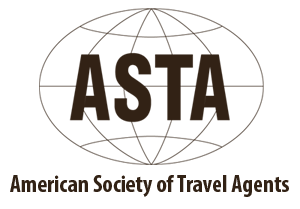ALTITUDE SICKNESS
What to know about Altitude Sickness while climbing Kilimanjaro
If you are planning to Climb Kilimanjaro, We highly recommend reading our altitude sickness (Acute mountain sickness guide) to be familiar what it is, its cause and prevention.
The definition of altitude Sickness (Acute mountain sickness)
It is an illness that ranges from a mild headache and weariness to a life-threatening build-up of fluid in the lungs or brain at high altitudes. Acute altitude sickness is the mildest and most common form. Because more people are traveling to areas of high elevation like climbing Kilimanjaro.
High Altitude: 1500 – 3500 m (5000 – 11500 ft)
Very High Altitude: 3500 – 5500 m (11500 – 18000 ft)
Extreme Altitude: above 5500 m (18000 ft)
Altitude Sickness Causes
Altitude sickness symptoms occur when the rate of ascent into higher altitudes is too quickly that the body doesn’t get time to acclimatize. Altitude sickness generally develops at elevations higher than 8,000 feet (about 2,400 meters) above sea level and when the rate of ascent exceeds 1,000 feet (300 meters) per day.
The following actions can trigger altitude sickness:
Ascending too quickly (rapidly)
Overexertion within 24 hours of ascent
Inadequate fluid intake
Hypothermia
Consumption of alcohol or other sedatives
One way to avoid altitude sickness is allowing the body to get used to the altitude slowly (Acclimatization)
Acclimatization is the process by which the body adjusts to high altitudes.
The goal of acclimatization is to increase ventilation (breathing) to compensate for lower oxygen content in the air.
To compensate for this extra ventilation, blood needs to have a lower pH. In response, the kidneys excrete bicarbonate into the urine, which in turn lowers the body’s pH to accommodate for this extra respiratory effort.
ALTITUDE SICKNESS SYMPTOMS.
Acute altitude sickness may be associated with any combination of the following symptoms:
Fatigue
Headache
Dizziness
Insomnia
Shortness of breath during exertion
Nausea
Decreased appetite
Swelling of extremities
Social withdrawal
People with acute altitude sickness often attribute their symptoms to other causes such as an uncomfortable bed, bad food, or a hangover. However, it is important to recognize that these symptoms may indicate a high altitude illness which are High altitude pulmonary edema (HAPE) and High altitude cerebral edema (HACE).
High altitude pulmonary edema (HAPE) fluid build up in the lungs, An advanced form of acute altitude sickness, causes the following progression of symptoms:
Shortness of breath at rest
Gurgling respirations
Wet cough with frothy sputum
Possible fever
Respiratory failure
Onset of HAPE can be gradual or sudden. HAPE typically occurs after more than one day spent at high altitude.
High altitude cerebral edema (HACE) is fluid build up in the brain. It can begin with confusion.
A person developing HACE begins having trouble keeping up with the group.
Next, walking and coordination become impaired.
As the brain continues to swell, lethargy and then coma will develop.
If left untreated, HACE will ultimately result in death.
Both HAPE and HACE are potentially fatal but are thankfully extremely rare during a well-planned Kilimanjaro climb.
ALTITUDE SICKNESS TREATMENT
Delay further ascent until symptoms improve.
Rest and stay warm.
Take acetaminophen (Tylenol) for headache. (Ask your doctor for subscription )
Do not use sleeping pills or other central nervous system depressants to treat insomnia because they can suppress breathing.
If symptoms continue, do not travel any higher.
***In cases of HAPE or HACE, immediate descent is a necessary life-saving measure (2,000 – 4,000 feet [610-1,220 meters]). Anyone suffering from HAPE or HACE must be evacuated to a medical facility for proper follow-up treatment.
Acclimatization.
Acclimatization is the process in which an individual organism adjusts to a gradual change in its environment.
So while your climbing Kilimanjaro your body undergoes a process of trying to adapt the altitude transformation.
So, physiologically, what happens during acclimatization is, as you ascend higher into the atmosphere, there is less atmospheric pressure pushing all the air molecules together, so oxygen molecules become few and far between.
What to do to Acclimatize and prevent altitude sickness while climbing Kilimanjaro
Walk Slowly (pole pole)
When you climb Kilimanjaro, you will hear the phrase ‘Pole, pole’. This means ‘slowly, slowly’ in Swahili. The best way for your body to adapt to altitude is to move really slowly.This allows the intelligent body to adapt to the effects of altitude on Kilimanjaro. The higher you climb the higher the altitude and the harder it takes your body to cope up with its environment.
Hydration
Drinking allot helps and its renown to be one of the BEST method while dealing with acclimatization. We recommend at least drinking 4-5 Liters of water a day while climbing Kilimanjaro. It is usually good to keep an eye on your urine; if it gets too dark, you need to drink more.
Climb high sleep low
Another practice is “Climb high; sleep low.” What this means is that you should do day hikes that gain significant altitude, s and then return to sleep and recuperate at lower altitudes.
Avoid tobacco and alcohol and other depressant drugs including, barbiturates, tranquilizers, and sleeping pills. These depressants further decrease the respiratory drive during sleep resulting in a worsening of the symptoms.
Eat nutritious rich food
Eat a high carbohydrate diet (more than 70% of your calories from carbohydrates) while at altitude.
Incase you notice altitude symptoms
If you begin to show symptoms of moderate altitude illness, don’t go higher until symptoms decrease. ( in fact you should go to a lower elevation until you feel better)
Preventive Medications
Diamox (Acetazolamide) allows you to breathe faster so that you metabolize more oxygen, there by minimizing the symptoms caused by poor oxygenation. This is especially helpful at night when respiratory drive is decreased. Since it takes a while for Diamox to have an effect, it is advisable to start taking it at least 24 hours before you go to altitude and continue for at least five days at higher altitude. While taking Diamox Possible side effects may occur and they include tingling of the lips and finger tips, blurring of vision, and alteration of taste. The side effect subsides when the drug is stopped.
WE HIGHLY RECOMMEND Contacting your physician for a prescription. Since Diamox is a sulfonamide drug, people who are allergic to sulfa drugs should not take Diamox. Diamox has also been known to cause severe allergic reactions to people with no previous history of Diamox or sulfa allergies.
Dexamethasone (a steroid) is a prescription drug that decreases brain and other swelling reversing the effects of AMS. Dosage is typically 4 mg twice a day for a few days starting with the ascent. This prevents most symptoms of altitude illness.
WE HIGHLY RECOMMEND Contacting physician for prescription because of possible serious side effects. It may be combined with Diamox. No other medications have been proven valuable for preventing AMS.




